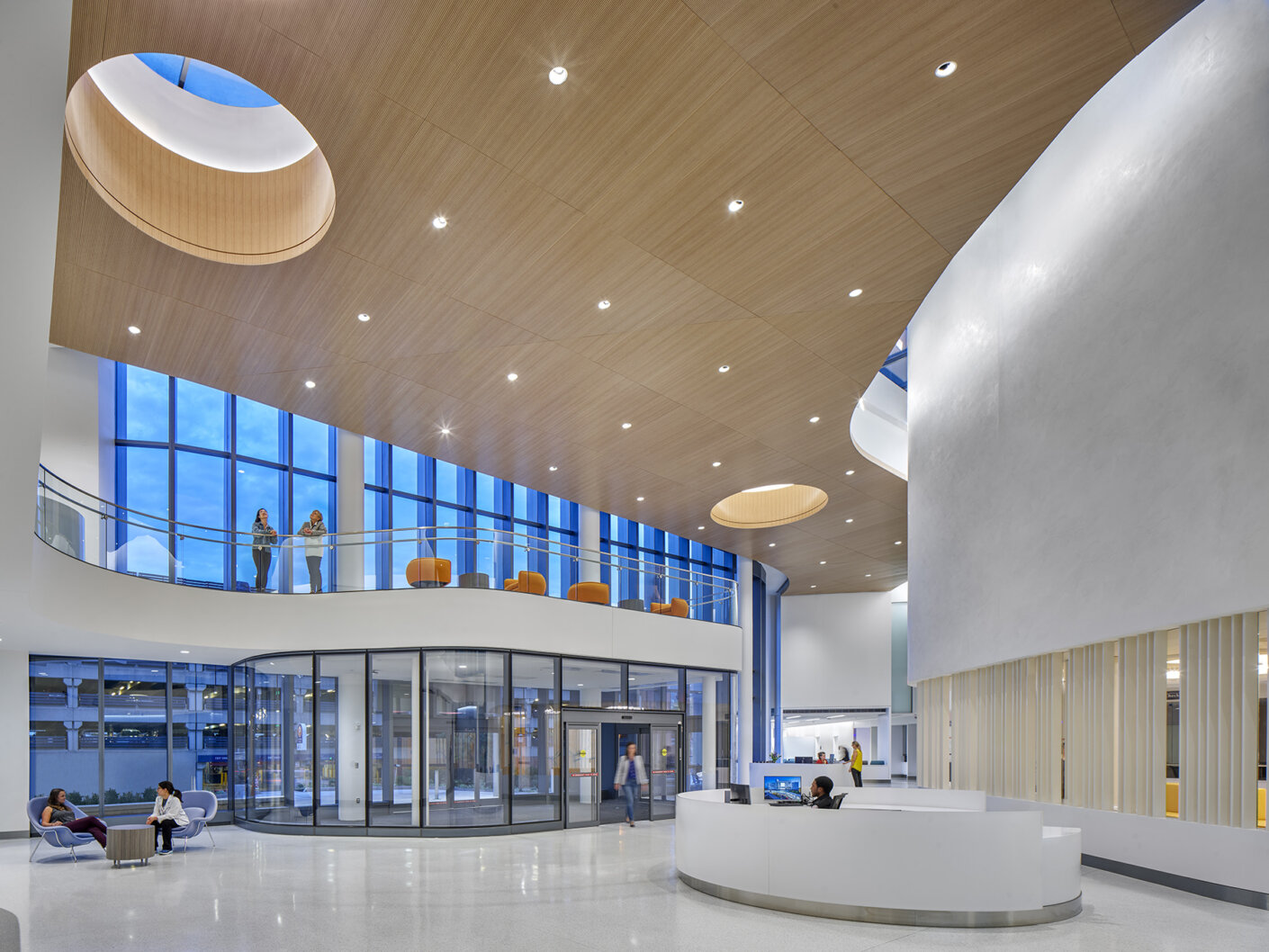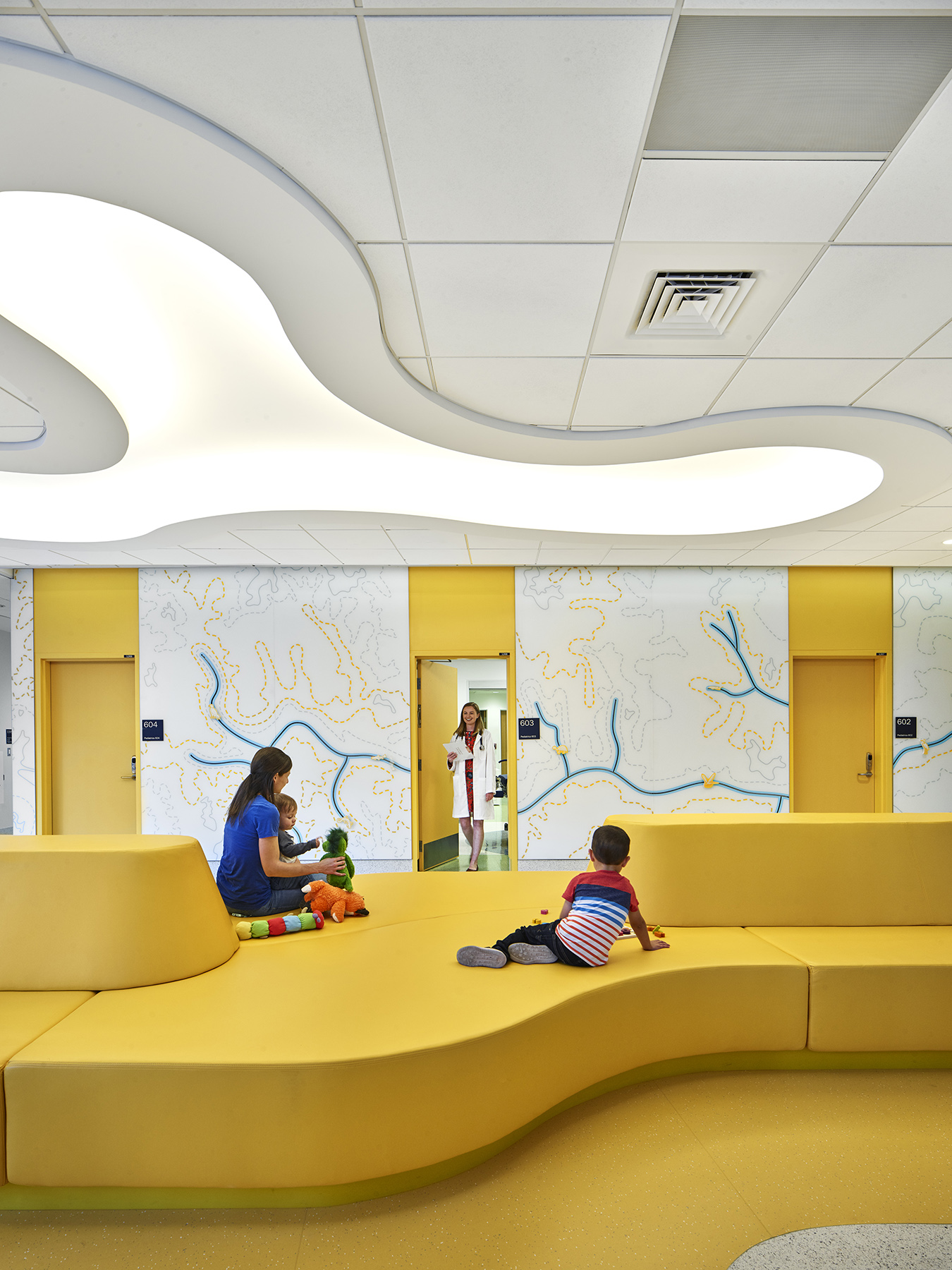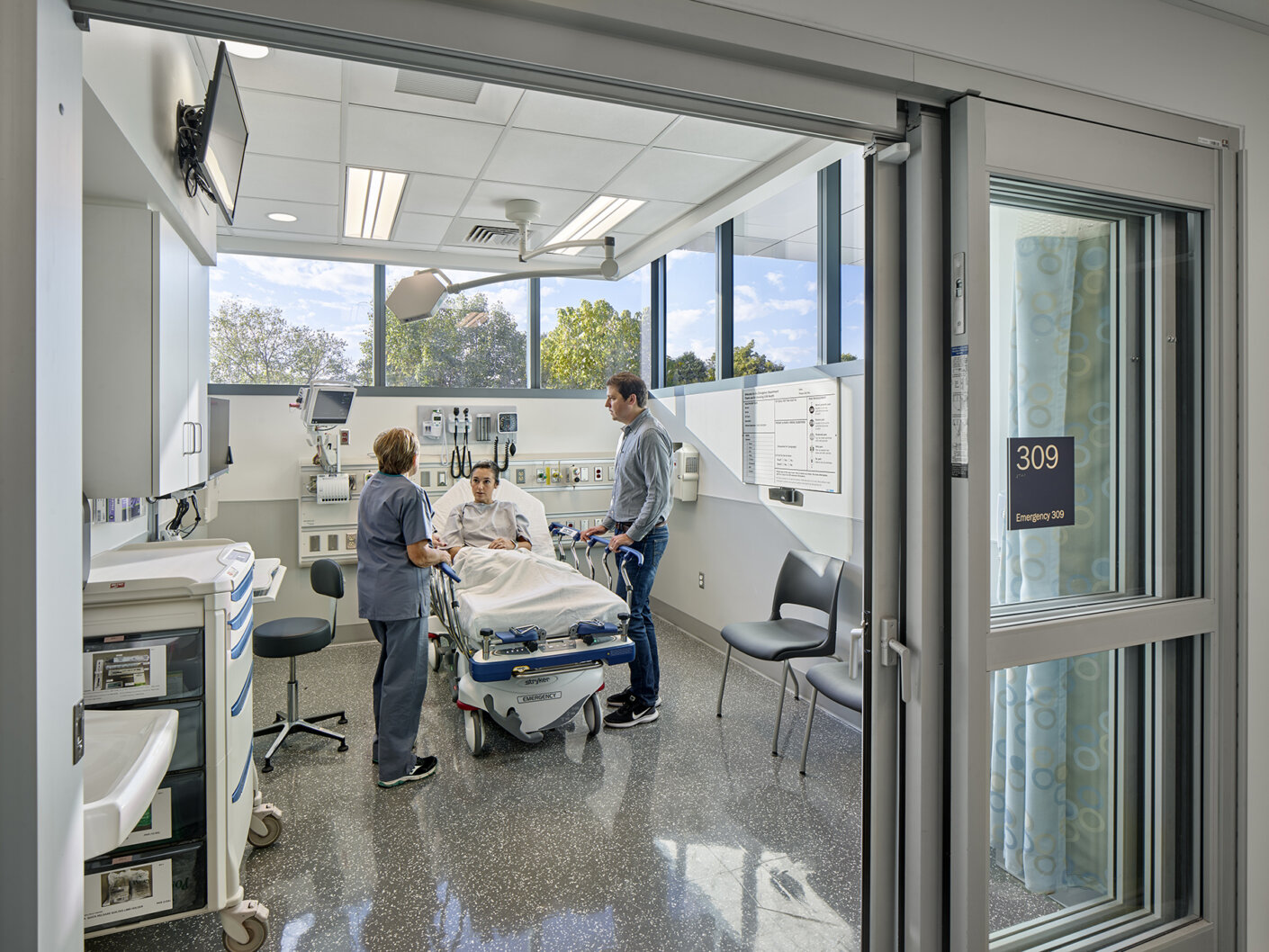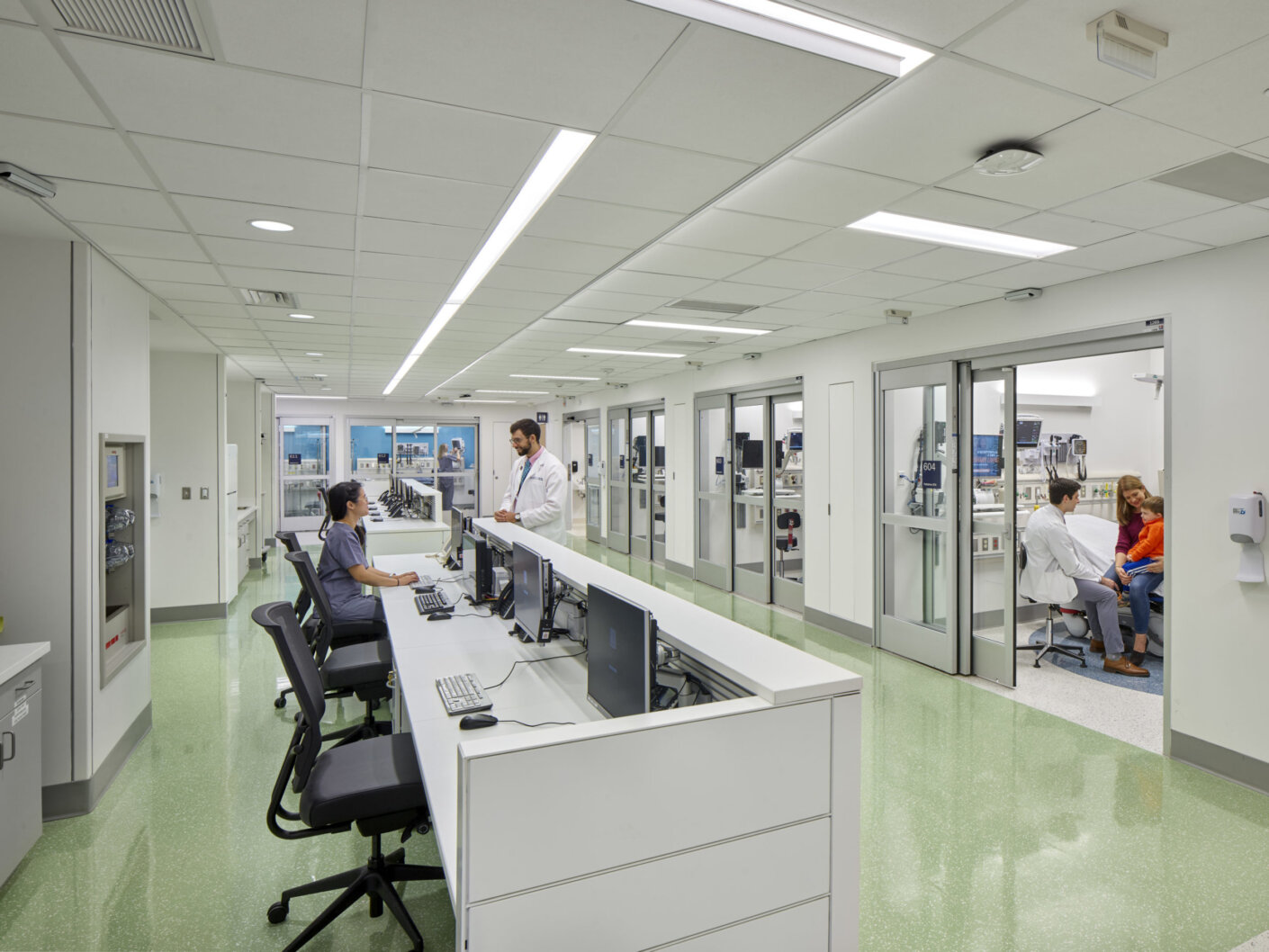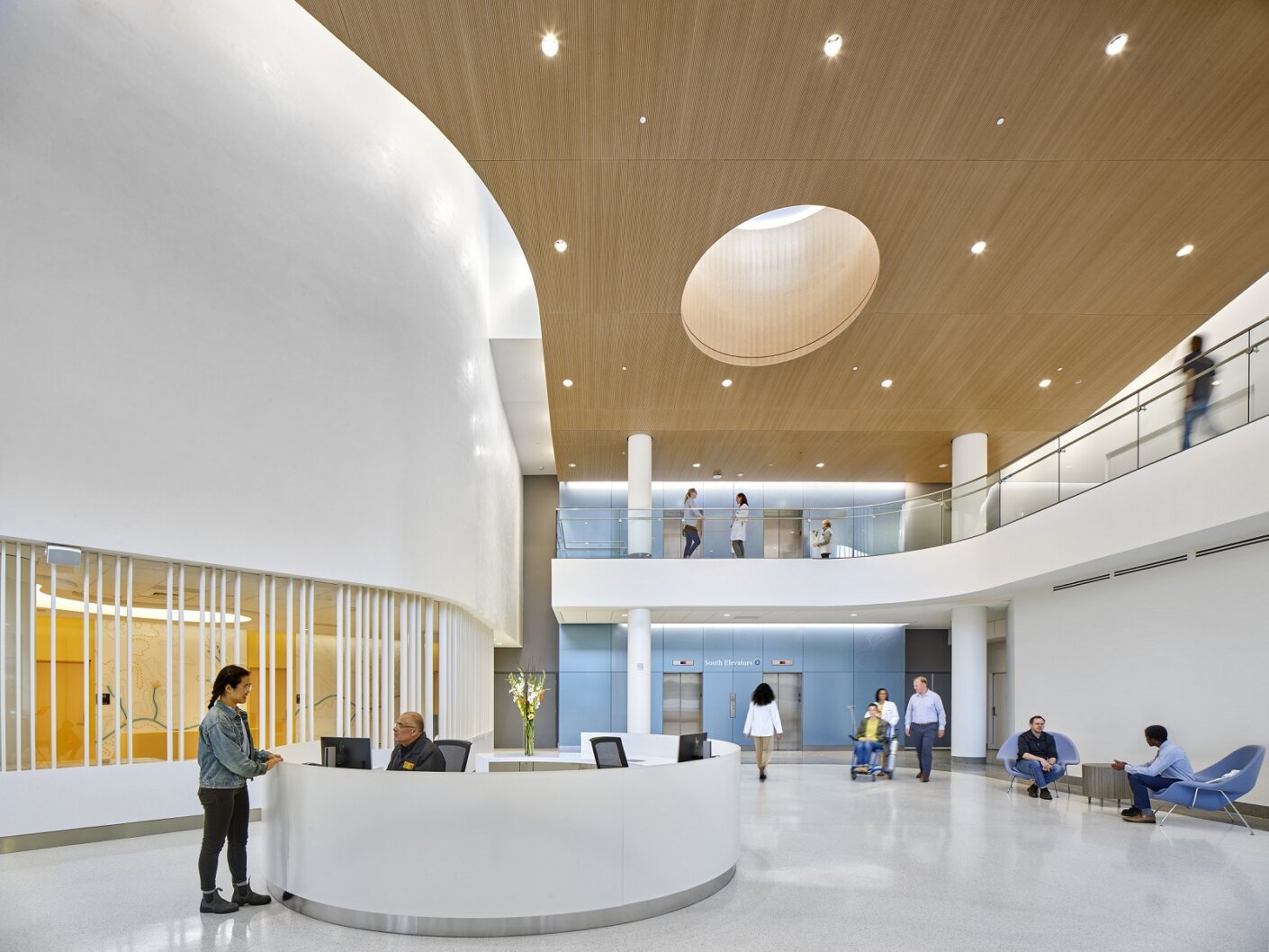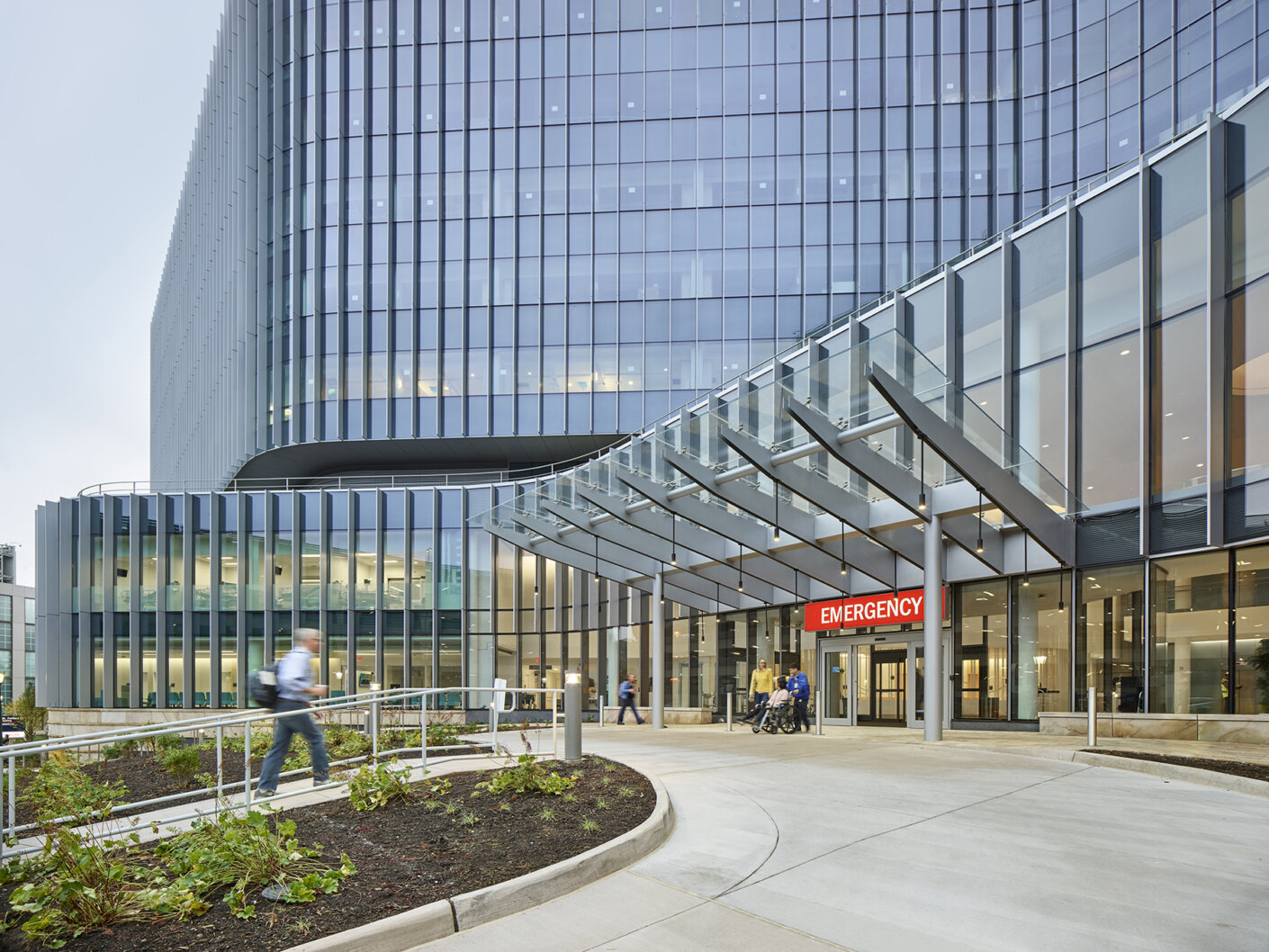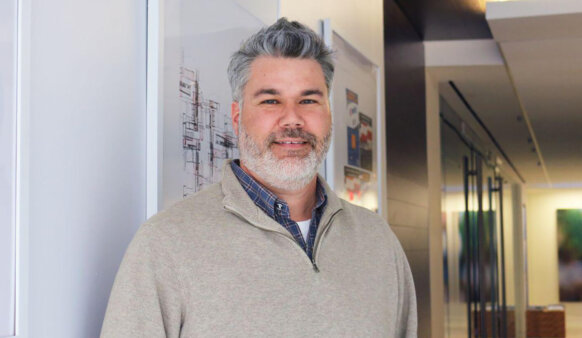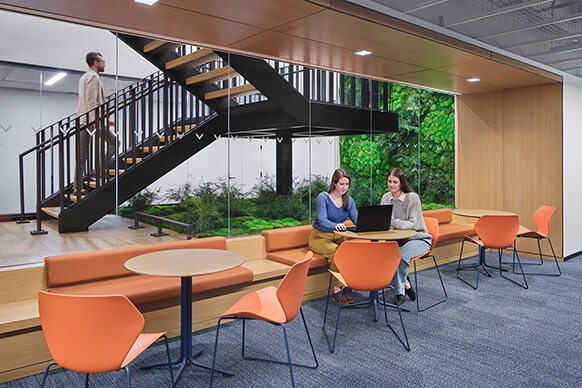CHARLOTTESVILLE, Virginia—The University of Virginia (UVA) Health System’s new emergency department and in-patient bed tower will offer an enhanced and more dignified experience for patients and staff when the project reaches completion this spring. Designed by global architecture firm Perkins&Will, the expansion of the state’s top-ranked hospital prioritizes well-being while maximizing the number of patients who can receive world-class care.
The expansion will connect patients and staff to the calming effects of nature, reduce the building’s environmental impact, allow for greater flexibility in the way patients and staff use space, and accommodate evolving medical technology and best practices.
“Positive patient, family, and staff experiences are at the heart of our design approach,” says Brian Sykes, associate principal at Perkins&Will and regional health practice leader. “From patient privacy and dignity to staff safety and space adaptability, we’ve created a healing environment where excellence in care and comfort is top priority.”
“This hospital isn’t just highly functional; it’s also beautiful. It’s a building that patients, families, and staff can feel good about, inside and out,” says Ralph Johnson, principal and global design director at Perkins&Will. “We designed the expansion to stand out, architecturally—to have its own visual identity—yet, at the same time, we made sure that it blends harmoniously with the existing hospital and surrounding UVA campus.”

